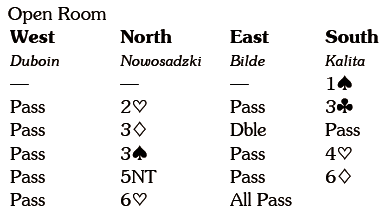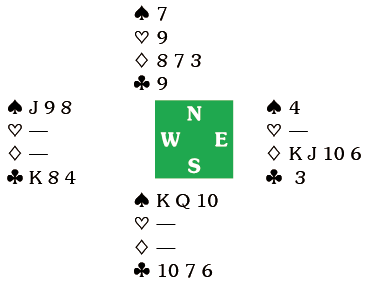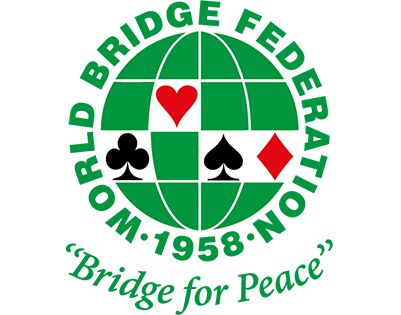
Inference and Hypothesis
By WBF In 15th World Bridge Series, Articles On 27th September 2018
Sometimes when you go down in a contract you spot a winning line in the post mortem and think ‘I should have seen that’. Take a look at this deal from the final session of the Rosenblum round of 16.


In the other room NS has stopped in 3NT and emerged with twelve tricks.
East led the  Q and declarer won with dummy’s ace, dropping the jack from his hand, and drew trumps pitching the
Q and declarer won with dummy’s ace, dropping the jack from his hand, and drew trumps pitching the  5. He continued with the
5. He continued with the  9 and West won and switched to a diamond. Declarer won, cashed the
9 and West won and switched to a diamond. Declarer won, cashed the  A and then played a spade to the ten. When West produced the jack and played a second diamond the contract was four down.
A and then played a spade to the ten. When West produced the jack and played a second diamond the contract was four down.
Was it possible for declarer to make the contract?
The opening lead suggested that East held a doubleton club and he had followed to three rounds of trumps. He had doubled 3 , which suggested he held some length in that suit, which might persuade declarer that East is unlikely to be long in spades.
, which suggested he held some length in that suit, which might persuade declarer that East is unlikely to be long in spades.
Suppose after drawing trumps declarer cashes the  A and then plays a fourth round of trumps discarding dummy’s
A and then plays a fourth round of trumps discarding dummy’s  Q. West is already under pressure. Discarding a spade is immediately fatal, and pitching a club allows declarer to play the
Q. West is already under pressure. Discarding a spade is immediately fatal, and pitching a club allows declarer to play the  9, establishing enough winners. So, West must part with a diamond. Now declarer cashes the ace of diamonds to reach this position:
9, establishing enough winners. So, West must part with a diamond. Now declarer cashes the ace of diamonds to reach this position:
 When declarer plays the
When declarer plays the  9 West must duck. Now declarer cashes the last trump forcing West to part with a club. Declarer crosses to dummy with a spade and exits with a club, forcing West to lead into dummy’s spade tenace.
9 West must duck. Now declarer cashes the last trump forcing West to part with a club. Declarer crosses to dummy with a spade and exits with a club, forcing West to lead into dummy’s spade tenace.
Beautiful, as I’m sure you will agree, but after the opening lead declarer can get home by the prosaic play of returning a club.
